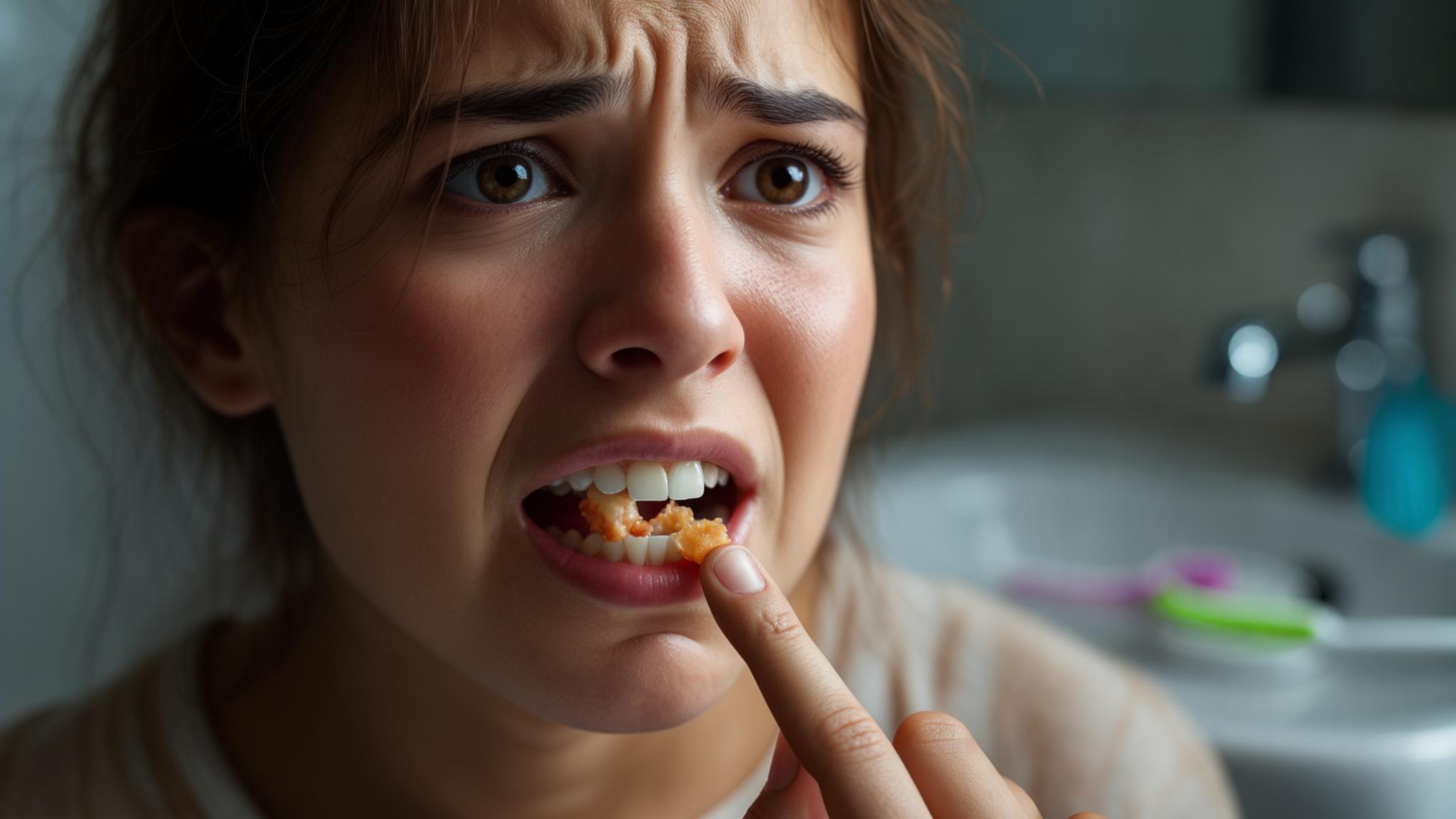Understanding the Issue
Getting a foreign object stuck in your teeth can be a frustrating and uncomfortable experience. Whether it’s a piece of food or a small object, it’s important to address the situation promptly and safely. Ignoring it can lead to further discomfort or even dental issues. This article aims to guide you through safe methods to dislodge trapped items and when to seek professional help.
Common Types of Foreign Objects
Food Items
Food is often the culprit when it comes to objects stuck in teeth. Here are some common offenders:
- Fibrous Foods: Items like meat and certain vegetables can easily get wedged between your teeth.
- Hard Foods: Nuts and popcorn kernels can be particularly troublesome, as they can crack or damage teeth while getting stuck.
Non-Food Items
Not all foreign objects are food-related. Be aware of:
- Dental Floss and Hygiene Tools: Sometimes, these can get caught in teeth or braces.
- Small Toys or Objects: Items like beads or coins can accidentally find their way into your mouth, especially with children.
- Dental Appliances: Braces or retainers can also trap food or other objects.
Initial Assessment
Identifying the Object
Before taking action, try to assess the situation:
- Visual Examination: If you can, look in the mirror to see what’s stuck.
- Assessing Pain Levels: Pay attention to any pain or discomfort you feel. This can help determine how serious the situation might be.
Determining Severity
Look for signs that indicate how severe the issue may be:
- Signs of Injury or Bleeding: If you see blood, it’s crucial to take action quickly.
- Difficulty in Breathing or Swallowing: If you’re having trouble breathing, this is an emergency, and you should seek help immediately.
Safe Methods to Dislodge Foreign Objects
Rinsing with Water
One of the simplest methods is to rinse your mouth with warm water:
- Importance of Using Warm Water: Warm water can help loosen food particles without causing irritation.
- How to Perform the Rinse: Take a mouthful of warm water and swish it around gently. Spit it out and repeat if necessary.
Flossing Techniques
If rinsing doesn’t work, try using dental floss:
- Using Dental Floss: Gently slide the floss between your teeth to dislodge the object.
- Proper Flossing Technique: Be careful not to snap the floss against your gums, as this can cause injury.
Toothpicks and Interdental Brushes
These tools can be helpful, but use them with caution:
- When to Use: If flossing doesn’t work, a toothpick or interdental brush can help.
- Risks Associated with Improper Use: Avoid using too much force, as this can damage your gums or teeth.
Chewing (for Food Items)
Sometimes, chewing can help dislodge food:
- How to Chew Carefully: Chew soft foods, like bread, which may help push the stuck item out.
- Foods That May Help: Soft bread is great, but avoid hard or crunchy foods that could worsen the situation.
Avoiding Certain Methods
There are some methods you should steer clear of:
- Importance of Not Using Sharp Objects: Avoid using knives or other sharp items, as they can cause injury.
- Risks of Using Excessive Force: Trying too hard can lead to more damage, so be gentle.
When to Seek Professional Help
Signs That Indicate a Need for Dental Assistance
If home remedies don’t work, it’s time to see a dentist:
- Persistent Pain or Discomfort: If pain continues, don’t wait.
- Objects That Cannot Be Removed at Home: If you can’t get it out, don’t hesitate to ask for help.
- Signs of Infection: Look for swelling or redness around the area.
What to Expect During a Dental Visit
When you visit the dentist, here’s what may happen:
- Examination and Possible Imaging: The dentist will check your mouth and may take X-rays to see the object.
- Methods a Dentist May Use: They have tools and techniques to safely remove foreign objects without causing harm.
Prevention Tips
Importance of Dental Hygiene
Keeping your mouth clean can help prevent foreign objects from getting stuck:
- Regular Brushing and Flossing: Make it a habit to brush twice a day and floss daily.
- Routine Dental Check-Ups: Regular visits help catch issues before they become problems.
Being Cautious with Certain Foods and Objects
Awareness can help prevent future incidents:
- Awareness of Potential Hazards: Be mindful of foods that can get stuck, especially if you have braces.
- Educating Children: Teach kids about safe eating and playing habits to avoid choking or getting objects stuck.
Conclusion
In summary, getting a foreign object stuck in your teeth can be distressing, but with the right approach, you can often resolve the issue safely. Remember to stay calm, assess the situation, and try gentle methods first. If you’re ever in doubt, don’t hesitate to seek professional help. Your dental health is important, and taking care of it should always be a priority.
References
- American Dental Association: Dental Health Resources
- Centers for Disease Control and Prevention: Oral Health
- Dental Health Foundation: Emergency Dental Care
For further reading on dental emergencies and tips for maintaining oral health, check out these resources.

